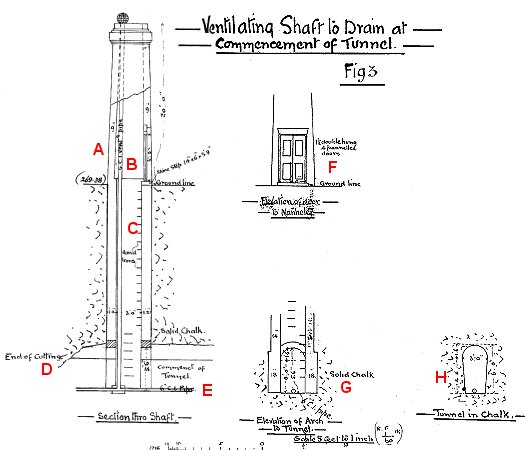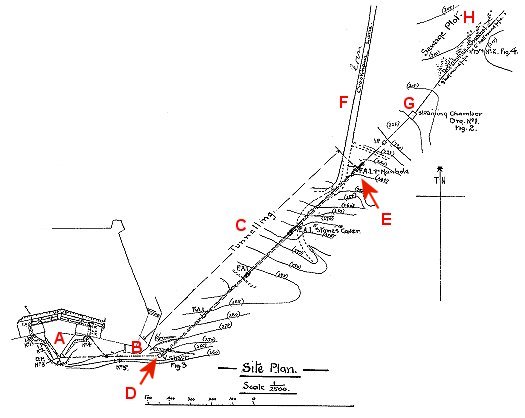|
As the
research into this tunnel was developing I was contacted by Paul
Wells who supplied several photos of a similar site in Dover.
These suggested that the purpose of the Tunnel No2 was to carry
sewage northwards away from the Fort.
Further
research at the Public Records Office by Peter Cobb produced the original plans of the tunnel, and these are shown
below.
It was
indeed a service tunnel, built in 1898 - some 30 years after Fort
Purbrook was built - and it housed a 6 inch cast iron sewer
pipe. The Ventilation Tower was built because the pipework of this
era leaked, and the tunnel had to be ventilated at high level to
keep the smell clear of the Fort. A tunnel was used to carry the
pipe, because in those days it was cheaper to tunnel than to 'cut
and cover', especially at a depth of 20 feet. The tunnel did not
enter the boundaries of the Fort, but stopped at the vent tower.
The cost of
the project was £1815, and interestingly £500 of this was
provided by the Portsmouth Water Company. The other Forts - e.g. Fort
Widley - on Portsdown, discharged their sewage through
pipes, SOUTHWARDS, to cesspits at the foot of the Hill.
However to the south of Fort Purbrook are the Portsmouth Water
Company Reservoirs, and the reason that so much trouble was taken
to carry the sewage north, was to prevent the Fort's effluent from
contaminating this water supply.
|

